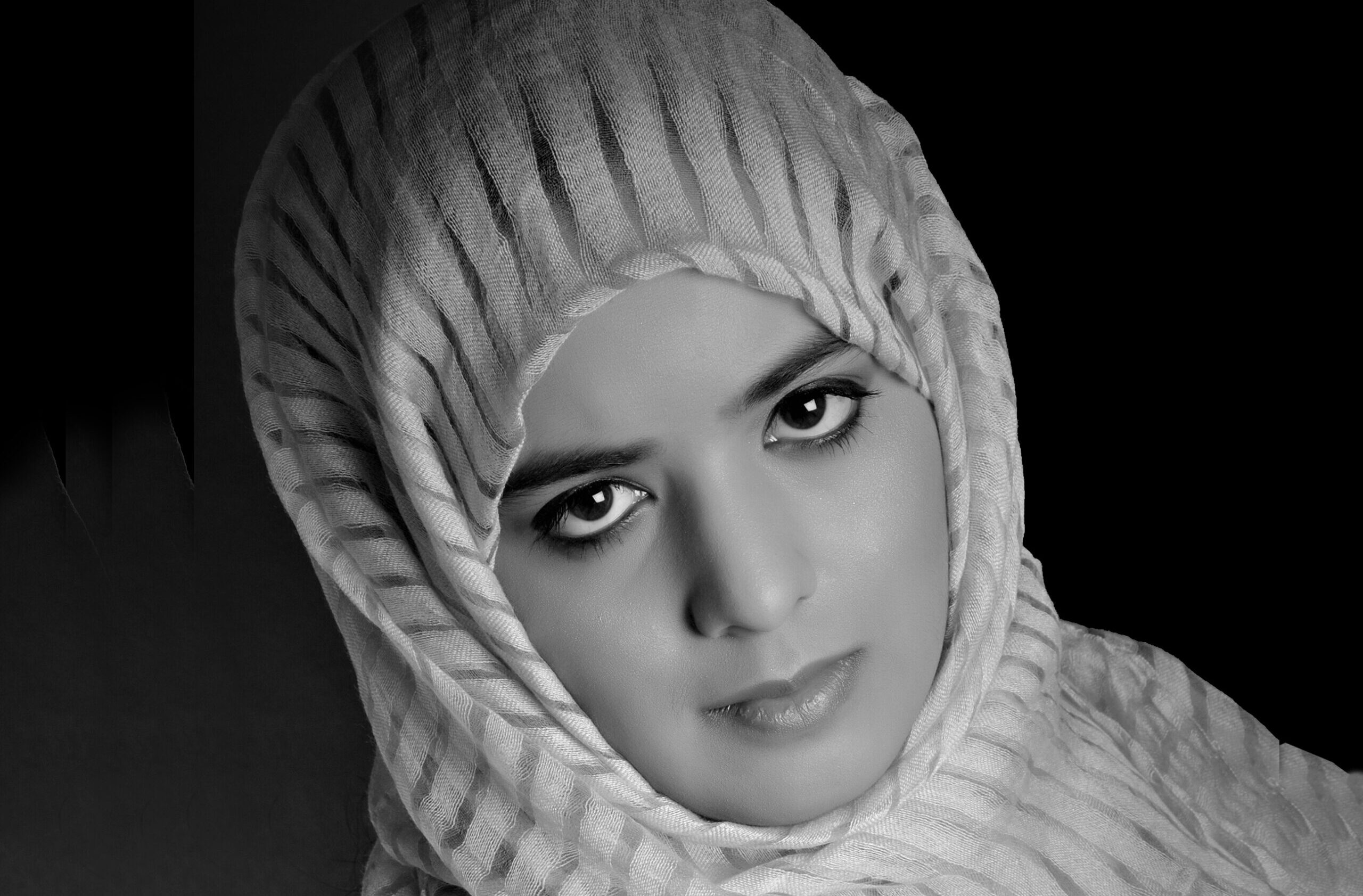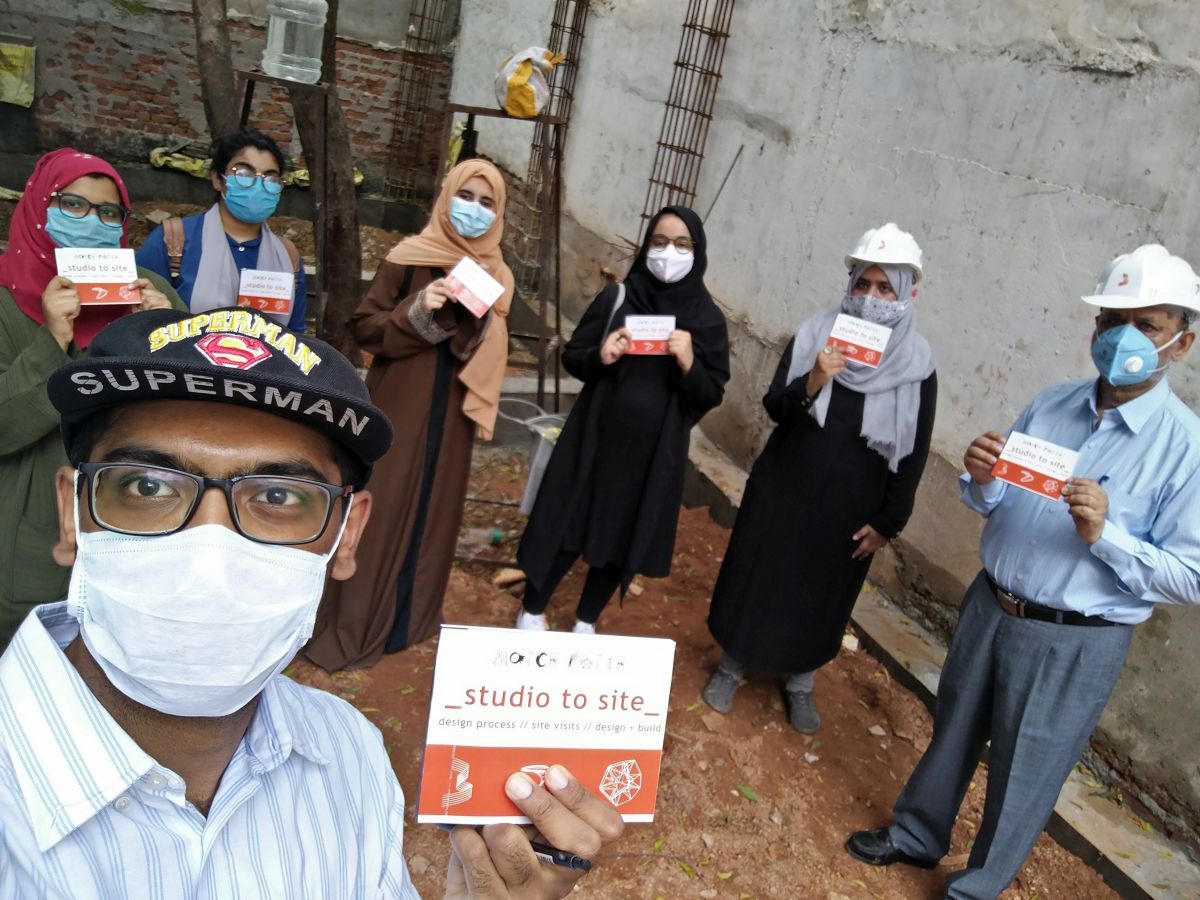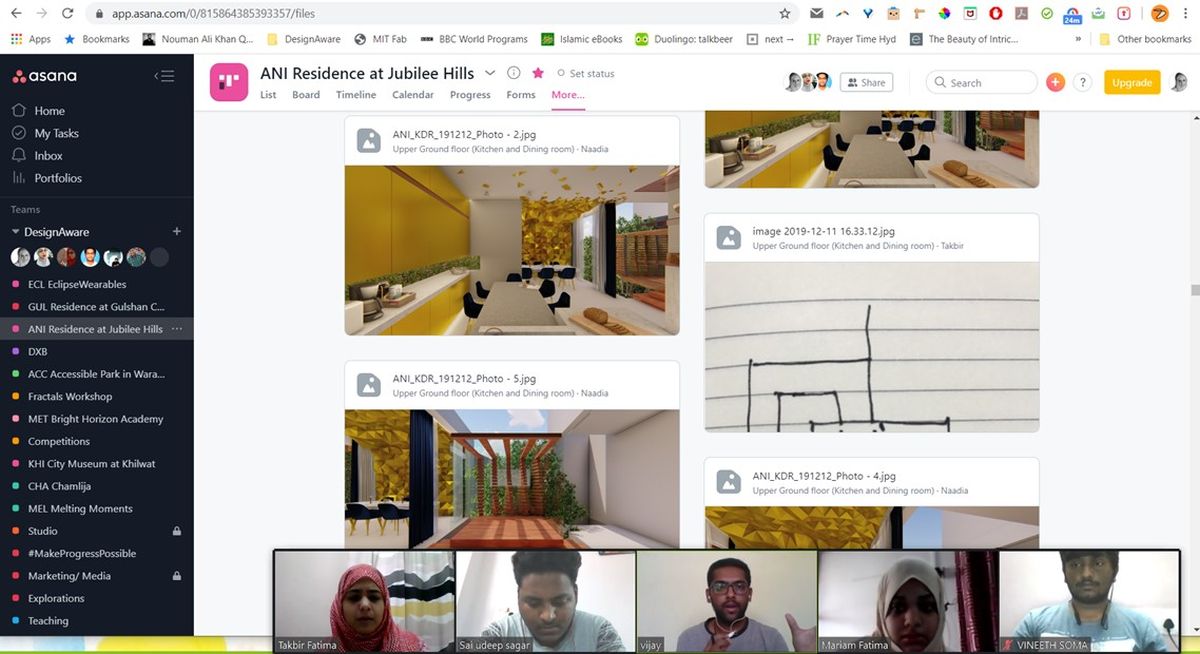Effect of the pandemic on the work and strategies:
Tell us about some important projects that your studio was involved in just before the lockdown. Which were the biggest challenges and fears you faced because of the lockdown?
Before the lockdown, we were working on various projects that were in different stages. We had two residences of varied scales, of which one was under construction and the other was about to be constructed. We had a prefab restaurant project in the final design stage, a library project and several parks for the Government of Telangana. We had also started two new initiatives parallelly. One is called “BuildAware” which is our construction and fabrication firm. The other is called “Studio to Site”, a long-term educational program that takes students of architecture and design, as well as young professionals, to our live sites for hands-on learning of the construction process.
Due to the lockdown, we had to work from home and continued to work on projects that were in the design stages. We also got special permission to attend to certain Government projects, such as the landscape design for Raj Bhavan, the Governor’s residence in Telangana. However, many other Government projects were stalled indefinitely. “BuildAware” and “Studio to Site” were affected the most because construction activity was completely halted for months.
As our library project has been halted indefinitely, we are now working on translating the design into a virtual reality environment so that it can be experienced even if it doesn’t get built. We also started a whole range of online educational initiatives and remote collaborations, including a series of Fractals Workshops in collaboration with Turenscape Academy, China, the Boston Architectural College, USA, and Facebook, that were attended by students from all over the world. The student work of the Fractals Workshop usually culminates in an exhibition. This time, instead of a physical one, we created virtual exhibitions of the designs as a virtual reality walkthrough. This allowed people from anywhere in the world to attend the exhibition and see student work. We are also in the process of organizing a remote-build workshop with Turenscape Academy, in which selected designs from the workshop will be built on their campus while students can participate in the process remotely. AR technology and digital fabrication allow us to control the build process remotely, and this is something we should take advantage of.
Our project, Hilltop School, Golconda, is frequently visited by colleges and architects from all over India almost every month. That was stopped in 2020, so we led a live virtual walkthrough of the school in partnership with Dezeen. We were the only Indian practice to participate in the Dezeen Virtual Design Festival 2020. Most importantly, right at the beginning of the lockdown in early April, we organized a lecture series called “Road Less Traveled”, that brought together nine architects from all over the world, who had opted to take diverse career paths. The idea was to introduce various career options to students and young architects, instead of the traditional understanding of the role of an architect.
When we learned of the plight of migrant and construction workers during the lockdown, we decided to donate the funds raised through the “Road Less Traveled” lecture series to organizations that were working to provide relief to daily-wage and migrant workers impacted by the lockdown, as well as to healthcare professionals aiding COVID-19 patients. Within three weeks, #StarveTheHungerVirus raised and channelled substantial funds towards these causes.
In addition to the pandemic, Hyderabad was hit by extremely heavy rains and a deadly flood in September-October, the worst in over 100 years. Half the city was submerged for weeks, and so was our studio. All our physical models were destroyed, but the extent of damage was far less than that of many other low lying areas. Throwing ourselves into our work and into helping others was how we got through the uncertainty of the lockdown. We saw the flood as a cleansing force that led us to clean the studio and start afresh.
What were the challenges you faced with the monetary flow in your practice and how are you handling them?
We have been fortunate to have clients who continued to pay our design fees as we worked through the lockdown. Our design + build projects that were about to begin construction supported us most through the lockdown and when construction was restarted.
The salaries of the core team were adjusted so that we were able to pay the full salaries of all our interns and maintenance staff. It has been challenging planning for the future because some projects have been postponed by six months, while others have been stalled indefinitely. However, monetary flow is always uncertain when you’re running a business, and we have been used to planning our finances in chunks of time as opposed to quarterly or monthly. Entrepreneurs need to diversify income sources. The new initiatives we started in April made up for a large part of the income we lost.
How are you strategizing to adapt to the new conditions of work upon resumption of office post the lockdowns?
Though we have an office space, we have always been comfortable with working remotely. Some of our team members are located in other cities, and we have always travelled for work while keeping in touch with the team in the studio. We also frequently collaborate with international agencies and clients. Hence, working-from-home has not been a very new situation for us. Our newly started initiative called the remote internship is also ongoing now. It allows us to work with enthusiastic and talented students from anywhere in the world.
Were any new methods of work evolved during the lockdown? How were the coordination issues resolved with the studio staff and on-site team?
You’ll be surprised to know that we have been frequently working remotely since 2010! Over the years, we have had multiple remote site visits in India, Saudi Arabia and the UK. We designed the branding and interiors for a restaurant in London working with agencies in different locations, and it was inaugurated just before the second lockdown in the UK. Many of DesignAware’s projects are available online as 360-degree walkthroughs.
Apart from the new tools we began to use during this time, which had Zoom in the list as the mainly used, we have always worked over Asana for task management and WhatsApp for our remote site visits and coordination with workers on site.
What were the biggest learnings from the pandemic? And which decisions and new work methods you feel your studio will continue with for the future?
The biggest learning was for us to pause and take time to slow down, think and come up with new ideas. The downtime we were forced to be in allowed us to augment our skill sets and learn, and to map out what ways and methods we wanted to continue using for work and which ones we wanted to eliminate.
Working exclusively on the firm itself is just as important as working for the firm. Resilience and adapting to unpredictable situations is imperative for any business.
We took this as an opportunity to reach out to organizations from all over the world, and we collaborated with over 40 cities in 2020. During this time, we were also approached by new potential clients from Saudi Arabia, USA, UK, Israel and Italy.
How have your contractors and labour network been influenced by the lockdown and what measures have you made to sustain or revive them?
Since we hadn’t yet started construction, we didn’t have any labour engaged before the lockdown. The #StarveTheHungerVirus initiative was our small contribution to help construction workers during these hard times. For months after the lockdown reopened, we still had trouble engaging labourers.
About the Practice –
Please let us know about the founding year, principals, team and studio.
DesignAware, our studio, is an interdisciplinary design and experimental architecture practice aiming to create awareness through liveable, wearable, usable, accessible and responsible design. We’re situated in Hyderabad and Dubai. Our focus is on process-oriented design, and our projects range from lighting to furniture, interior design to renovation, and residential, commercial, institutional and public architecture in addition to urbanism. DesignAware was conceived by Takbir Fatima while she was a student at the Architectural Association in 2010, and remained a virtual practice until it was officially established as a studio in Hyderabad in 2014 and later in Dubai. We also were recently shortlisted for the Dezeen Architecture Award for Emerging Architecture Studio of the Year 2020.
To elaborate on our team, Takbir Fatima is the director at DesignAware. She is an architect, educator and entrepreneur. She has studied and worked in Saudi Arabia, UAE, India and the UK. Takbir completed her B.Arch from CSIIT School of Architecture and Planning, Secunderabad, which is affiliated to JNAFAU, Hyderabad. She also completed her M.Arch in Architecture and Urbanism from the Design Research Lab at the Architectural Association, London. Abeer Fatima is the Lead Interior Designer of DesignAware and CEO of the signature wearables brand, Eclipse. She has a B.Des in Interior Design from Raffles College of Design & Commerce. Abeer is passionate about accessible and universal design and is also experienced in project management and execution.
Asna Moazzam, is an Associate Architect and heads the Dubai studio of DesignAware. She is also the founder of the sustainability initiative, “ard”, which carries out extensive research on building materials and traditional technology of the Emirati desert. Asna has a B.Arch from SV College of Architecture, Cyberabad, which is also affiliated to JNAFAU, Hyderabad. Asna is passionate about sustainability and responsible design. Hyma Vennapusa Song is a Partner and Associate Architect at DesignAware and heads the virtual studio in Chicago. She completed her B.Arch from CSIIT School of Architecture and Planning, Secunderabad, (affiliated to JNAFAU, Hyderabad. She holds an M.Arch from the University of Texas at Arlington. Hyma’s areas of expertise include project management, permit process with municipal authorities, building code research, consultant coordination and client management.
What are some of the processes and work methods unique to your practice?
DesignAware works across different scales and disciplines, with a special focus on technology-driven as well as socially-relevant projects, such as a school for students of disadvantaged backgrounds in the heritage zone of the Golconda Fort in Hyderabad. In a non-profit endeavour, DesignAware successfully raised partial funds and contributions to build the context-sensitive school on a tight budget through the social media crowdfunding campaign, #MakeProgressPossible. DesignAware continues to initiate and be involved in community-building, accessibility and design education initiatives. We also work in partnership with various organizations and governments to make design accessible. DesignAware takes an experimental approach to the design process through investigative, open-ended design research between analogue and digital tools and methods. We believe in freeing the studio from geographical constraints and instead emphasize an international network of core and peripheral members.













